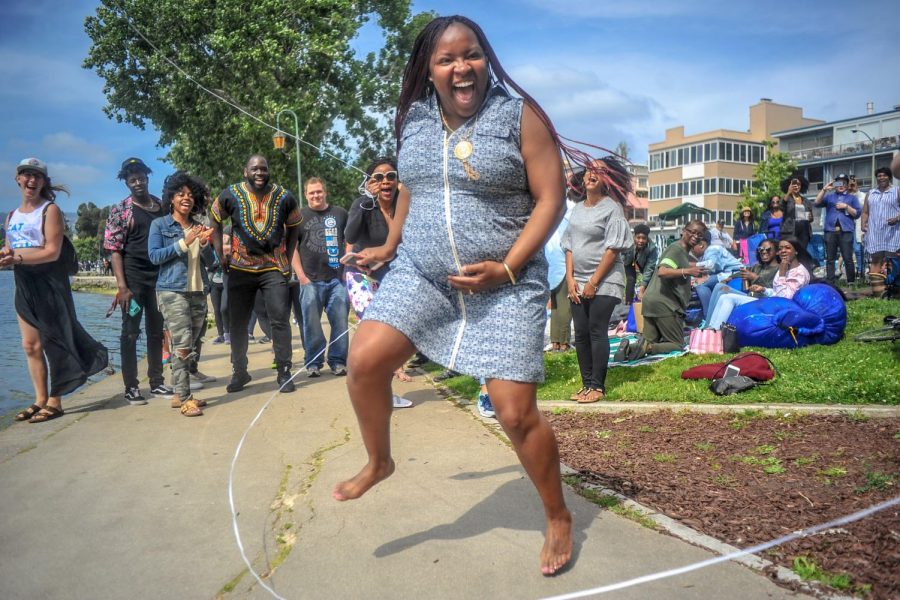Communal actions heal
Social justice spurs family within people dedicated to a cause
Oakland resident Thoineisha Finley doubledutch jumps while pregnant during the “BBQing while Black” festival at Lake Merritt in Oakland, California on May 20. The festival was held in response to Jennifer Schulte, an Oakland resident who called the Oakland police on fellow Oaklander Kenzie Smith for BBQing with a charcoal grill at Lake Merritt on April 29.
Dec 5, 2018
Many people view community activism as a term that solely focuses on the political movement that occurs within a community.
Many view advocacy through a lens that often colors actions as “radical” or “unconventional.”
Ultimately, what community activism entails is the tying of unique individuals within a community to a single identity, regardless of background.
In the East Bay, the history of activism within the community has been one that has showcased what people can do when they organize and come together.
Following the election of President Donald Trump to the White House, the local community’s response has been one of unification in the midst of political turbulence.
Various groups within the East Bay had their own stake in the recent elections and are bringing the focus of community activism back to the roots of the community.
Tenezin Rangdol is the president of the Tibetan Association of Northern California, which operates out of a small office in Richmond. He sees the needs of his community as part of a bigger picture of community members living in harmony.
Rangdol said, “Our Tibetan culture is one which focuses on the teachings of the Dalai Lama and we use those values to help us not only bring our community together but be instrumental as members of the community.”
The TANC is one of the organizations involved in community activism that focuses on tying a specific culture to the local community.
Rangdol said, “We celebrate different holidays from Tibet to bring our community members together but we also focus on local issues and show how we can be effective within our community.”
Community activism does not only limit itself to strengthening cultural ties between members of a specific community. It also creates dialogue and shared information between the younger members of a community.
The RYSE Youth Center in Richmond is an example of local leaders creating community activism within the younger residents in the East Bay.
By reaching out through events engaging the local youth by meeting them in their own environment, RYSE is planting the seeds that lead to the appropriate questioning of the systems that operate our city, county, state and national governments.
Carlos Lemus works at the RYSE Youth Center visiting high schools and engaging with the youth who are on the verge of voting.
CCC students are presented with a unique opportunity to be involved with bringing their local community together but have their own issues to face while desiring to engage in social justice.
Health and human services major Kristin Lobos spends her time outside of the classroom dedicated to different causes within our local community.
She has worked to end mass incarceration and the stigma of drug addiction.
Lobos said, “I think a lot of our CCC students care about social justice, but we also have lots of struggles just to keep ourselves and our families lives together.”
“There’s not as much time for activism since it takes leadership and organizing, but also time. We’re all spread so thin and survival is much harder with rent being so high,” she said.
Understanding the changing of the times financially for many in the East Bay is something that many like Lobos have to work with — especially if they wish to organize for a better future.
“When my parents were young activists, they didn’t come from rich families but college was affordable. Everything was affordable. On the other hand, nothing changes unless people rise up.”
Lobos said, “Everything good that has happened in this country came from lots of hard work and organization.”


